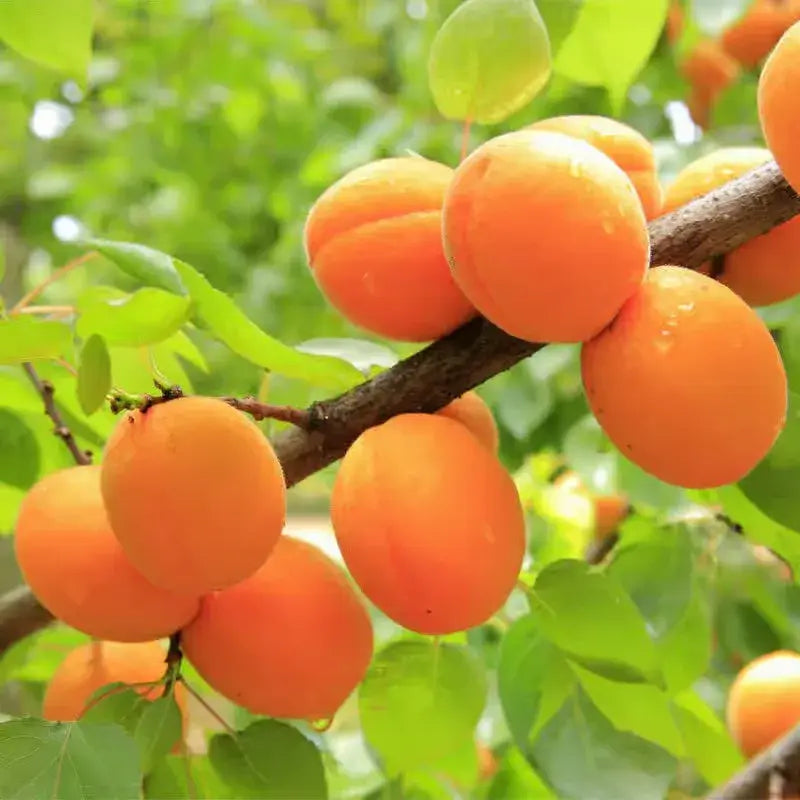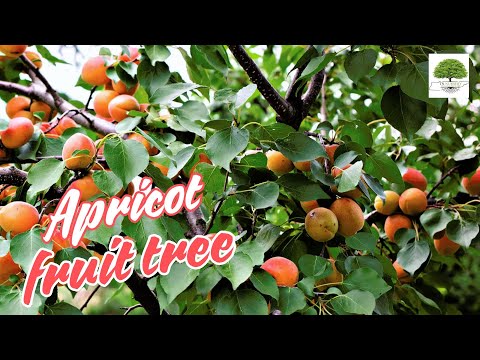Apricot Trees for Sale | Prunus Armeniaca
Apricot Fruit Tree 3-4' (Prunus armeniaca) is native to Armenia but will be at home planted in your home orchard or garden. A hardy, deciduous tree that will give you plenty of sweet yet tart fruit and shade for generations to come.
Apricot Fruit Tree Plant Details
Family: Rosaceae
Light Requirement: Full Sun
Water Needs: Moist
Height: 15 – 20 ft.
Spread: 15 – 20 ft.
Growth Rate: Fast
Bloom Time: Spring
Flower Color: White
Wildlife Value: Attracts Bees
Landscape Uses and Maintenance of Apricot Fruit Tree
The Apricot Fruit Tree 3-4' is a rewarding fruit tree to grow that is beautiful, practical, and ornamental. They have small, soft pink to fragrant white flowers. This fruit tree grows very quickly and will gain a large amount of height in the first couple of years of growth.
These fruit trees require a moderate amount of maintenance. Get your tree pruners ready for action! They will need pruning of dead, rubbing, or diseased branches. You should prune to thin out some of the branches, too, which will give you better quality fruits. Prune in the late winter.
The autumn royal apricot tree need full sun. However, they benefit from having some sort of protection to help keep them better guarded from unexpected late frosts and wind. The sunlight will also dry out limbs and leaves, in turn preventing diseases from spreading through your tree.
Make sure to plant your Apricot Fruit Trees in an area with well-draining soil. Avoid planting them in clay soil that holds more water. These trees will not tolerate a high water table.
Water thoroughly when first planted until well established, taking care not to overwater. You will need to water this tree during dry periods.
Give a balanced fertilizer that will encourage fruit set and overall tree health.
Flowers will attract bees and butterflies.
Noteworthy Characteristics of Apricot Fruit Tree
The Apricot Fruit Tree 3-4' is a Moorpark apricot self pollinating, meaning that you can have one tree and still produce fruit. However, most self-pollinating trees will actually produce more vigorous fruit when more than one tree is present. So, plant multiple varieties and enjoy a bountiful harvest!
Exposure
Apricot fruit trees thrive in full sun, requiring 6 to 8 hours of sunlight daily. They favor a sunny spot with well-drained soil to ensure healthy growth, abundant fruit production, and optimal ripening of the apricots.
Height at Maturity
Under 25 Feet
Usage
Fruit
Shipped As
Bare-root
Ships
UPS
Planting Zones
4-9




